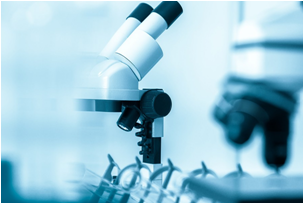
Promising therapeutic approaches with curative potential for LGMD2I sufferers include:
- Gene therapy
- Cell therapy
- Gene/Base editing
All of these potentially curative technologies are based on nuclear gene transfer. Below, we are providing a brief description of each of these technologies to complement the information provided in the website list at the end of the page.
Gene Therapy
Gene therapy or more aptly called “in vivo” gene therapy consists of the delivery of a “healthy” gene to diseased cells inside a person’s body. The gene is administered by intravenous injection of the treatment product. Once delivered to the muscles, the new gene will efficiently produce a functional protein to treat the disease.
Singularities
- Gene therapy does not remove or modify the defective gene.
- The new gene is not integrated in the patient’s genome.
Cell Therapy
The type of cell therapy appropriate to treat muscular dystrophies consists of the delivery of “corrected” stem cells. The stem cells come from the person’s own body. The genetic correction is done “on the bench”, meaning outside the person’s body, by “ex vivo” gene therapy, which is the delivery of a “healthy” gene to the extracted stem cells. The “corrected” cells are cultivated, multiplied, and transformed into progenitors of muscle cells. They are then administered by intravenous injection. Once settled into the muscles, these cells will recreate the lost muscles with new healthy tissue.
Singularities
- Corrected cells are not “targeted” to the muscles, but end up settling into muscles by affinity.
- The healthy gene is integrated in the cells’ genome, changing them forever into healthy muscle cells.
Gene Editing
Gene or Base editing has been used in 2 main ways
- Gene editing is being developed as a direct therapy. Like gene therapy, it delivers a genetic product. The difference with gene therapy is that, instead of delivering a new, improved FKRP gene, it delivers a repair system that will correct the mutation inside the person’s FKRP gene.
- Gene editing is also being used as a corrective tool for cell therapy (see above the bullet point #2). Correcting the FKRP mutation in the extracted stem cells can be done with several systems including gene or base editing.
Singularities
- CRISPR/cas9 is not the only gene editing system, but it is the most famous.
- Because the repair system is administered systemically to a patient, it is possible that it may modify germline and progeny.